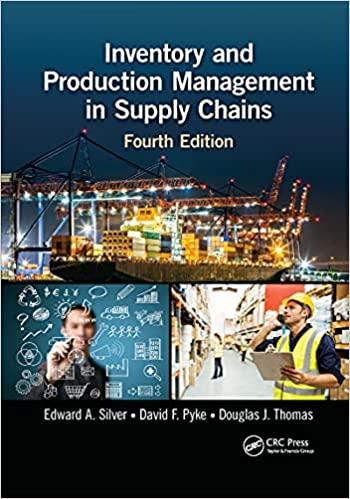Alexander Norman owns several retail fur stores in a large North American city. In the spring of
Question:
Alexander Norman owns several retail fur stores in a large North American city. In the spring of each year, he must decide on the number of each type of fur coat to order from his manufacturing supplier for the upcoming winter season. For a particular muskrat line, his cost per coat is $150 and the retail selling price is $210. He estimates an average sales of 100 coats but with considerable uncertainty, which he is willing to express as a uniform distribution between 75 and 125. Any coat not sold at the end of the winter can be disposed of at cost ($150) to a discount house. However, Norman feels that on any such coat he has lost money because of the capital tied up in the inventory for the whole season. He estimates a loss of $0.15 for every dollar tied up in a coat that must be sold off at the end of the season.
a. How many coats should he order?
b. One of the factors contributing to the uncertainty in sales is the unknown level of retail luxury tax on coats that will be established by the government early in the fall. Norman has connections in the government and manages to learn the tax level prior to his buying decision. This changes his probability distribution to a normal form with a mean of 110 and a standard deviation of 15. Now what is the best order quantity? How much was the inside information concerning the tax worth to him?? Lp852
Step by Step Answer:

Inventory And Production Management In Supply Chains
ISBN: 9781032179322
4th Edition
Authors: Edward A Silver, David F Pyke, Douglas J Thomas






